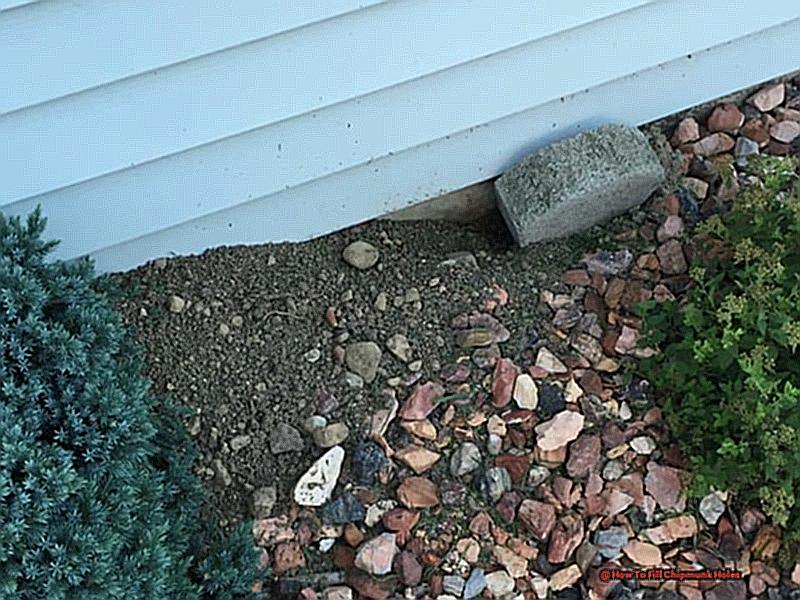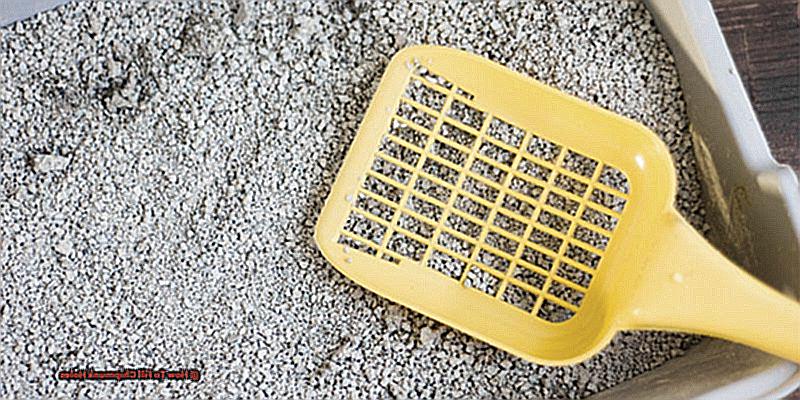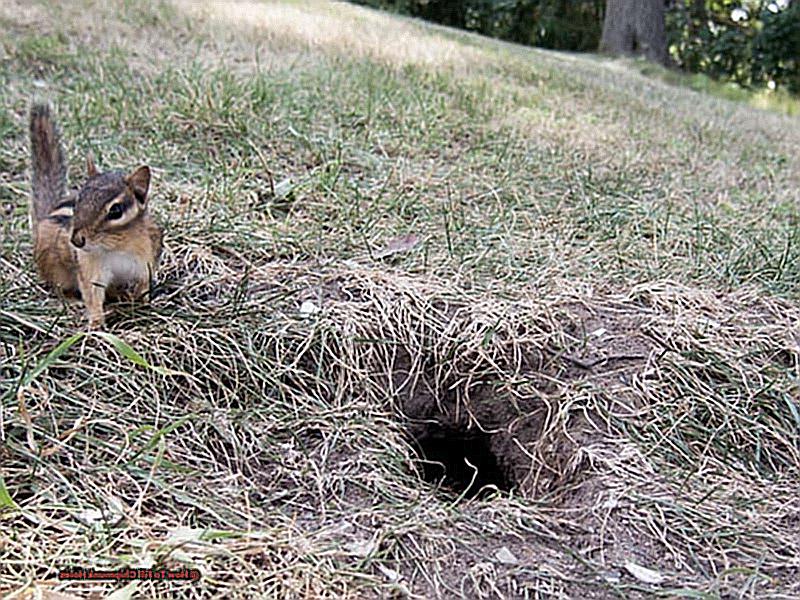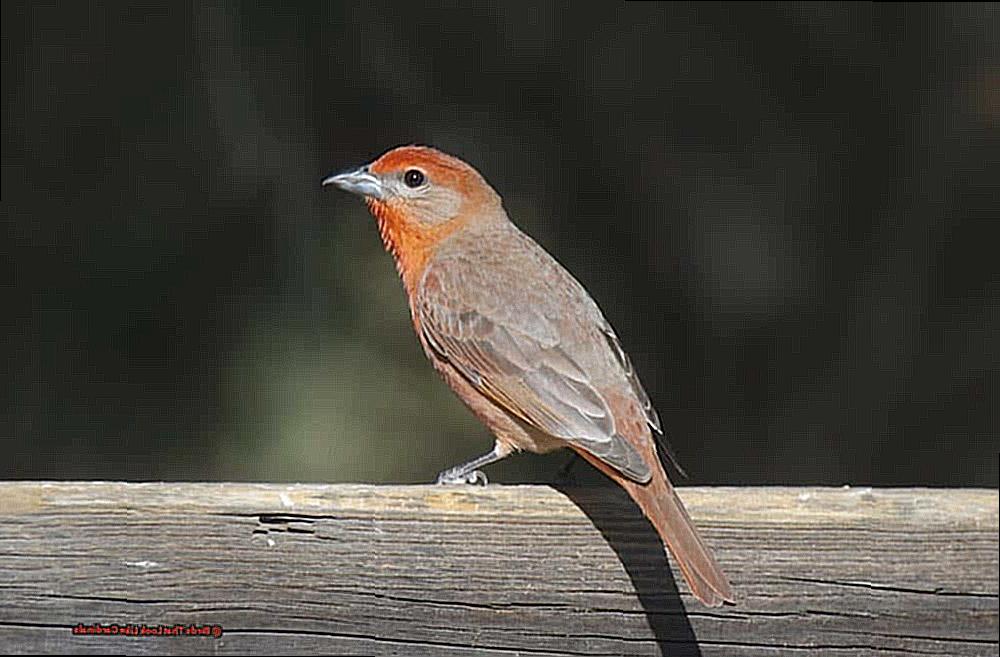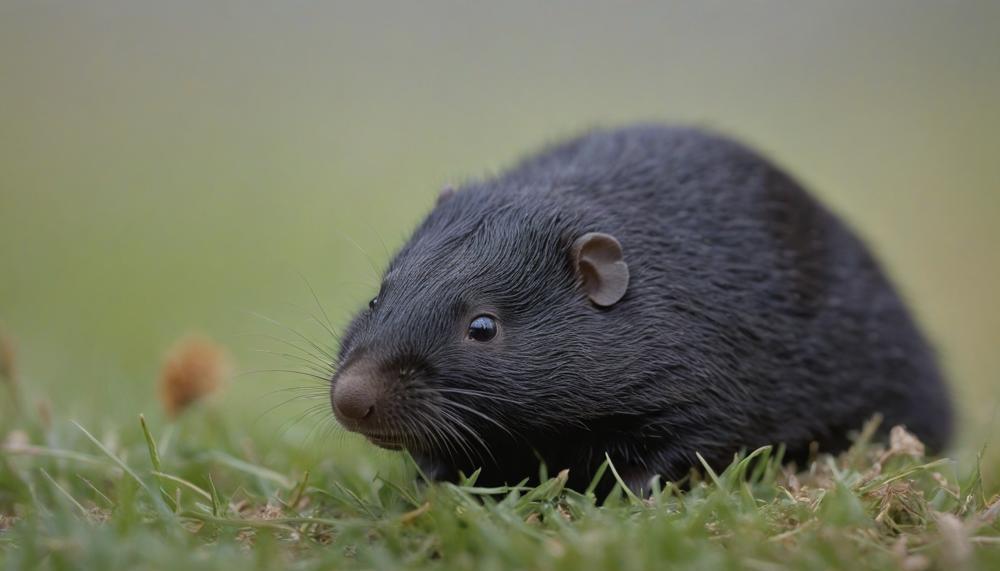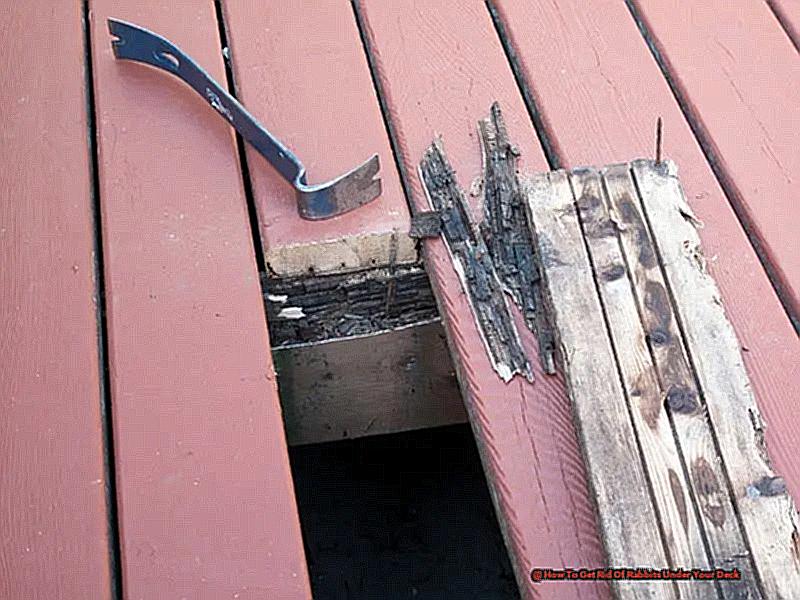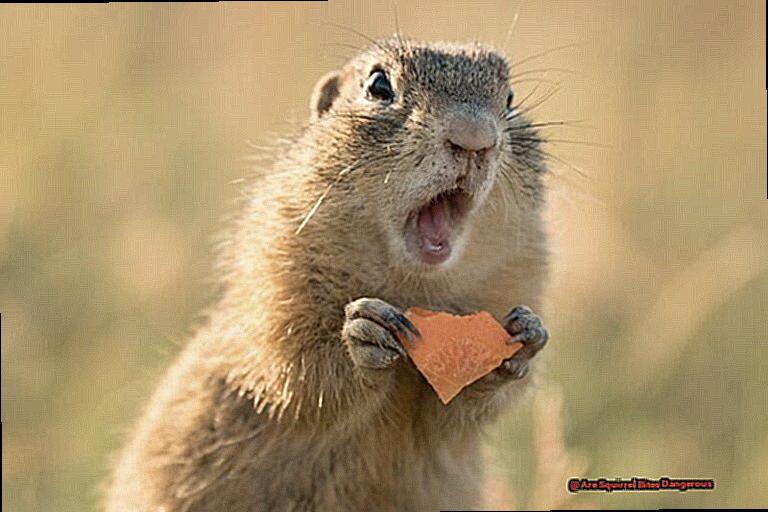Dear homeowners and fellow garden enthusiasts, are you tired of constantly stumbling upon chipmunk holes in your yard? Do these tiny burrows pose a threat to your loved ones and beloved pets? Fear not, for we have the perfect solution for you. In this blog post, we will delve into the art of filling chipmunk holes effectively. Bid farewell to unsightly and potentially hazardous holes, and welcome a beautiful, secure, and chipmunk-free outdoor space.
Get ready to discover the following key points:
- The importance of addressing chipmunk holes in your yard
- Essential tools and materials for filling these pesky burrows
- Step-by-step instructions on how to properly fill the holes
- Alternative methods for deterring chipmunks from digging new holes
- Tips for preventing future hole-digging
So, sit back, relax with a cup of coffee in hand, and get ready to master the art of filling chipmunk holes once and for all. Your yard will thank you later.
Table of Contents
How to Fill Chipmunk Holes
To effectively fill chipmunk holes and prevent further infestations in your home, follow these methods:
- Locate and Seal Burrows: Observe for indications of chipmunk activity, such as piles of soil or damaged plants, to find their burrows. Once found, seal the entrances with suitable materials like concrete, chalk or mesh wire.
- Use Coarse Sand: Fill the holes with coarse sand utilizing a funnel to ensure it reaches deep into the burrow. This will stop chipmunks from reopening the hole and creating new burrows.
- Trap and Relocate: Consider catching and relocating chipmunks before filling their holes for a lasting solution. Look for humane traps that won’t harm the chipmunks.
- Regularly Check for New Holes: Make it a habit to regularly inspect your yard for new chipmunk holes. If you spot any, fill them immediately to prevent further infestations.
- Avoid Poison Pellets: Refrain from using poison pellets as they can harm other animals and may not effectively solve the problem.
| Materials Needed | Pros | Cons |
| Cat litter | – Inexpensive and easily accessible – Fast and effortless solution |
– Unappealing – Requires covering with natural dirt and grass |
| Gravel | – More long-lasting solution – Fills hole more completely |
– May not look as visually appealing in yard – Fine gravel is necessary for better filling |
| Sand | – Fills hole completely – Inexpensive |
– Requires covering with natural dirt and grass |
In addition to these methods, it is important to eliminate possible food sources for chipmunks, such as bird feeders or gardens. Keep your yard tidy and free of debris, and prune back any overgrown vegetation that can provide shelter for chipmunks.
It is also beneficial to install barriers around potential entry points into your home, such as vents or gaps in the foundation. This will prevent chipmunks from entering and causing damage.
Steps for Filling a Chipmunk Hole
- Locate and Seal Existing Burrows: The first step is to find any existing chipmunk burrows on your property. These are typically found under rocks, logs, or in piles of debris. Once you locate them, seal them with wire mesh or hardware cloth to prevent the chipmunks from returning.
- Fill Holes with Coarse Sand: Simply filling the hole with dirt may not be enough as chipmunks can easily reclaim and reopen it. Instead, use coarse sand or fine gravel to fill the hole. This not only blocks the entrance but also improves drainage and makes it difficult for chipmunks to dig through.
- Consider Used Cat Litter: Another effective method is to use used cat litter to fill the holes. The strong scent and texture of the litter make it challenging for chipmunks to excavate, acting as a natural repellent.
- Use Underground Fencing: For a more long-term solution, install an underground fence made of privacy or mesh fencing. This should extend at least eight inches below ground level to prevent any burrowing animals from entering your property.
- Avoid Poisoning Methods: It’s essential to note that using poison pellets or attempting to make the holes look like they belong to a predator are not effective solutions and can have harmful consequences for other animals and plants.
- Regularly Check for New Holes: Keep an eye out for any new chipmunk holes on your property and fill them immediately before they become a problem.
- Use Deterrent Methods: Along with filling holes, consider using deterrent methods like electronic repellents or motion-activated sprayers to keep chipmunks away from your property.
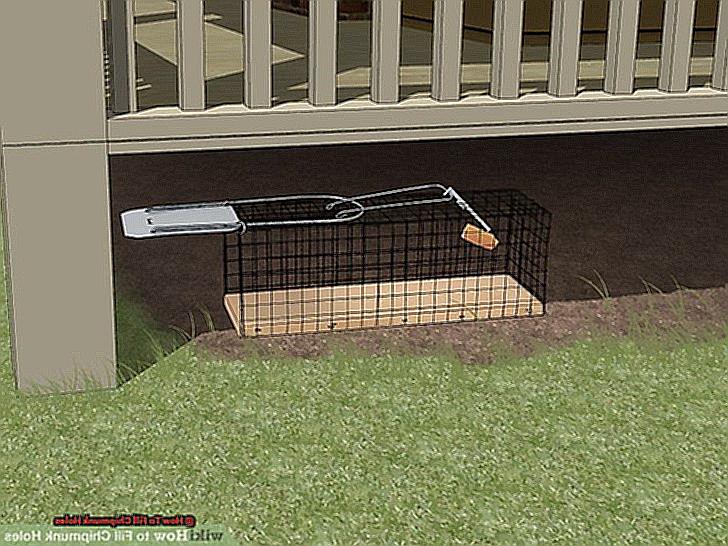
Why Fill Chipmunk Holes?
Filling chipmunk holes has numerous benefits and is a crucial step in pest control for any household. These advantages and the significance of this task include:
- Preventing further damage to lawns and gardens – Chipmunks are known for their mischief and can cause frustration for homeowners who take pride in their lawn’s appearance. By filling chipmunk holes, you can collapse underground tunnels and prevent them from causing more damage to your property.
- Maintaining a safe yard – While having a family of chipmunks in the yard may seem harmless, they can destroy flowerbeds, create uneven surfaces, and even create potential tripping hazards. Filling chipmunk holes can help keep your yard safe for your family and guests.
- Eliminating potential entry points for other pests – Chipmunk holes can vary in depth and extend up to 30 feet, providing easy access points for other pests such as mice, rats, and insects. Filling these holes prevents other pests from entering your property.
- Long-term pest control – Simply filling chipmunk holes is not enough to permanently eliminate their presence. Exclusion or relocation methods must be used for long-term pest control. Filling the holes is just one step in this process.
- Simple steps for filling chipmunk holes – The process of filling chipmunk holes is relatively simple and can be done using a lawn roller, plugging entrance and exit holes with soil, and spreading topsoil over the surface. This makes it an easy DIY solution for homeowners.
- Alternative methods – Other methods such as using gravel or concrete may be more effective in preventing chipmunks from burrowing into yards. Deterrent measures like fencing or natural repellents can also be implemented to make the yard less attractive to chipmunks.
- Protecting against other burrowing animals – Other animals that dig holes in yards include squirrels, voles, moles, and groundhogs.
What Does a Chipmunk Hole Look Like?
| Physical Appearance | How to Spot |
| Around 2 inches in diameter | Search for small holes of this size in your lawn or garden. |
| Can extend up to 30 feet | Notice if there are multiple holes in the same area, indicating a longer burrow system. |
| Dirt mound around entrance | Look for piles of dirt about 4-6 inches high and up to 12 inches wide near the entrance. |
| Rounded shape | Unlike other animal burrows, chipmunk holes are typically more circular in shape. |
| Frequent use | If you see a well-worn path leading into the hole, it is likely being used by a chipmunk. |
| Behavioral Indicators | How to Identify |
| Active during daytime hours | If you notice holes appearing overnight, it is less likely to be caused by a chipmunk. |
| Multiple burrows within their territory | If there are multiple holes in one area, they are likely connected and part of a chipmunk’s burrow system. |
To effectively identify a chipmunk hole in your yard, keep an eye out for its physical characteristics such as its small size, circular shape, dirt mound, and worn path. In addition, behavioral clues like daytime activity and the presence of multiple burrows within a territory can also help with identification.
For homeowners, it is important to be able to spot chipmunk holes in order to prevent further damage to their lawns and gardens. By understanding the physical and behavioral indicators of a chipmunk hole, homeowners can take necessary measures to avoid any potential damage. In addition, keeping an eye out for multiple burrows in one area can also indicate the presence of a chipmunk’s burrow system.
It is worth noting that chipmunks are diurnal creatures, meaning they are active during the day and sleep at night. This is why if you notice new holes appearing overnight, it is less likely to be caused by a chipmunk. Furthermore, chipmunks tend to have multiple burrows within their territory for different purposes, such as storing food or escaping predators. Therefore, if you see multiple holes in one area, they are likely connected and part of a chipmunk’s burrow system.
Understanding Chipmunk Holes
Chipmunk holes, also known as burrows, can be identified by a variety of shared traits. These features include their size, shape, and placement.
- Size: Chipmunk burrows are commonly around 2-3 inches in diameter, making them smaller than other animal burrows like those made by groundhogs or moles. They are also level with the ground, without any visible piles of dirt surrounding the entrance.
- Shape: A chipmunk’s home has numerous entrances, some of which may be obstructed by leaves or sticks. They also have “plunge holes,” which are tunnels that go straight down into the earth.
- Location: These critters often set up their burrows near trees or shrubs, as these provide shelter for the chipmunks to hide in. They may also be found near sources of food, such as bird feeders or gardens.
Along with these physical characteristics, there are also behavioral cues that can help identify a chipmunk hole. These include:
- Daytime activity: Unlike other burrowing animals that tend to be active at night, chipmunks are daytime creatures and can frequently be seen scurrying around during the day.
- Multiple burrows in one territory: Each chipmunk has its own individual burrow, and they will defend their territory from other chipmunks. This means that if there are multiple holes in your yard, they are likely being used by different chipmunks.
Why Fill Chipmunk Holes?
It is crucial to address the issue of filling chipmunk holes in your yard or garden for various reasons. Primarily, it helps prevent these bothersome rodents from continuously digging and causing damage to your property. Chipmunks are notorious for creating intricate networks of tunnels and burrows, which can weaken the ground, resulting in sinkholes or even harm to structures such as patios or decks.
In addition, filling chipmunk holes also contributes to maintaining the aesthetic appeal of your yard or garden. These small openings can be unsightly and disrupt the overall appearance of your outdoor space. By addressing and sealing them, you can improve the look and feel of your property.
Moreover, filling chipmunk holes is essential for safeguarding your plants and flowers. These critters are notorious for digging up bulbs and seeds, as well as consuming fruits and vegetables from gardens. By filling their burrows, you can prevent them from accessing and damaging your plants.
Furthermore, filling chipmunk holes can act as a preventive measure against other unwanted pests entering your yard or garden. These burrows can serve as entry points for other animals, such as snakes or moles, which can cause additional damage or pose a threat to you and your loved ones.
Apart from these reasons, filling chipmunk holes also promotes safety. These holes can be hazardous for unsuspecting individuals, such as children playing in the yard or visitors walking on your property. By properly addressing these holes, you ensure that no one accidentally steps in or falls into them.
To effectively fill chipmunk holes, there are several methods you can employ, such as using gravel or sand to fill the hole, covering it with soil or grass, or using sealants or expanding foam. It is crucial to monitor the area and ensure that the chipmunks do not return and re-dig the hole.
What Does a Chipmunk Hole Look Like?
Physical Appearance:
- Chipmunk holes are typically flat and circular, measuring about 2-3 inches (5-7.5 cm) in diameter.
- Unlike other burrowing animals, they do not have visible dirt mounds surrounding their holes.
- These holes can be found in various areas of the yard, including near structures, trees, or even in open spaces.
- The entrance of the hole is usually smooth and round, with a diameter of approximately 2 inches (5 cm).
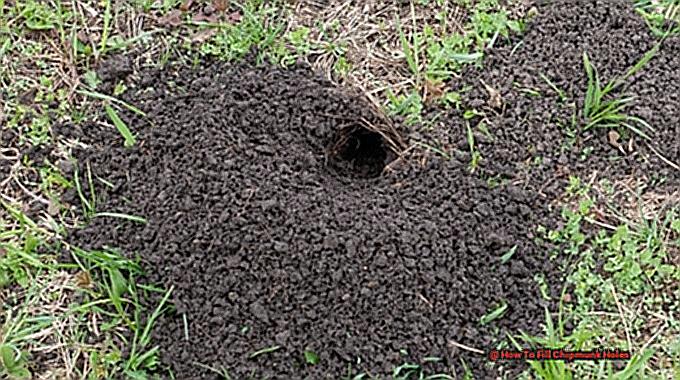
Identification:
- One way to identify a chipmunk hole is by its location. They are often found near structures, gardens, or other areas where food sources are plentiful.
- Another way is to observe the slope of the hole. A gentle downward slope typically indicates a chipmunk hole.
- You can also check around stones, woodpiles, or stumps that may conceal the burrows.
- If you notice multiple holes within a 10-foot radius, it is most likely a chipmunk burrow system.
- Lastly, the entrance of the hole will usually be about 2 inches (5 cm) in diameter.
| Physical Appearance | Identification | Location |
| – Flat and circular | – Near structures or gardens | – Any part of the yard |
| – Measuring about 2-3 inches (5-7.5 cm) in diameter | – Gentle downward slope | – Near trees or open areas |
| – No visible dirt mounds | – Check around stones, woodpiles, or stumps for concealed burrows | – Areas with abundant food sources |
| – Smooth and round entrance | – Multiple holes within a 10-foot radius | |
| – Approximately 2 inches (5 cm) in diameter |

